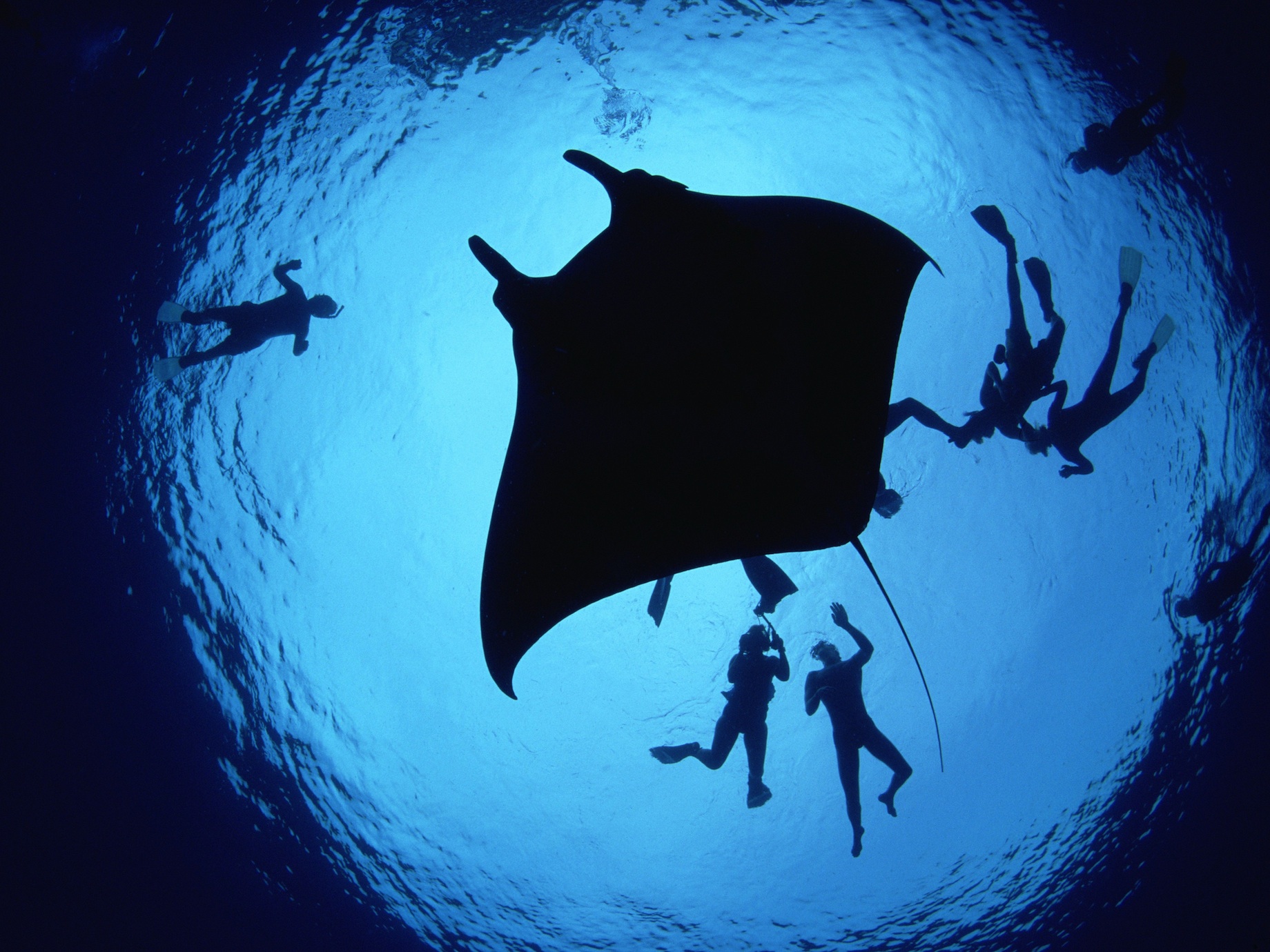Text : Manta Watch
Our vision is more effective research, management and conservation of manta rays. We promote awareness, change and solutions to the threats facing manta ray populations worldwide.
Most importantly, we believe that everyone has a vital role to play in looking after our oceans, and our planet. By working together, individual efforts are multiplied, and the costs and obstacles to conservation are reduced.
With this mind, our projects aim to encourage active participation in manta ray conservation.
Our manta photo tagging project provides the tools for anyone to get involved in monitoring manta populations. It requires no training or specialist equipment. Divers and snorkelers are able to play an important role in manta conservation by simply doing what they already do: taking photos of manta rays and sharing them online!
Our campaign to save manta rays is raising awareness about the issues and threats facing this majestic creature and its ocean environment. Through the support of our members, we are building the social and political momentum to effect change.
Conservation goes hand in hand with development. Through local initiatives to enhance educational facilities and conservation awareness in coastal communities, we aim to lay the foundations for more sustainable livelihood opportunities, and empower local communities to manage the future of their own marine resources.
What is MantaWatch?
MantaWatch was established to advance manta ray conservation and research, and to encourage people to actively take part.We had noticed three issues with existing manta conservation approaches:
• A shortage of data and information on mantas on which to base conservation planning.
• The high cost of collecting data on mantas across immense
• The challenge of targeting conservation and research approaches where they would be most effective.
We wanted to find a solution. A solution that would be low-cost, would provide the data needed to support conservation planning, and would enable more effective targeting of conservation and research to priority areas.
We knew that mantas can be identified through the unique patterns of markings around the gills.
We knew that there are more than 25 million divers worldwide. Divers who love taking photos of the environments and creatures they encounter.
And we knew that many divers share their photos online through social networks and photography communities.
We began to develop an idea that would combine these elements in order to crowdsource manta conservation. Using cutting edge web technologies, we began developing the online tools that would enable people to contribute, while removing the barriers to participation.
MantaWatch is a social approach to marine conservation. From empowering local communities to manage their own marine resources, to engaging divers and snorkelers in large-scale manta population assessments, we firmly believe that we all have a vital role to play in looking after our planet.
Why are mantas important?
Manta rays are highly valued by marine tourists, with people travelling to the farthest corners of the planet for a chance to encounter one of these majestic creatures in the wild. Healthy manta populations are a valuable natural resource, offer considerable economic potential via ecotourism.
Mantas roam the world’s oceans, and are intimately connected to the conditions they encounter. Mantas are an important indicator of the health of the ocean realm.
Mantas play an as yet unquantified role in the ecological function of our oceans. As consumers of large quantities of photosynthetic phytoplankton, they may help to transfer atmospheric carbon to the deep ocean, regulating climate change. At the same time they are an important component of the ecosystem that supports fisheries and provides food to millions of people.
Mantas posses deep cultural and spiritual importance for many coastal communities around the world. With declining manta populations, these cultural identities are at risk of being lost.
Find out more about mantas in our education zone.
What are the problems?
Mantas and the oceans in which they live are in peril. Scientists warn that global issues, such as climate change and ocean acidification, are altering the delicate balance of our oceans.
Meanwhile these ecosystems are under increasing pressure from overfishing, pollution and the activities that fuel our growing communities.
Worldwide, manta ray populations have declined by as much as 60 percent of the last 30 years. Conservation and management efforts are hindered by a lack of scientific knowledge about this elusive species.




